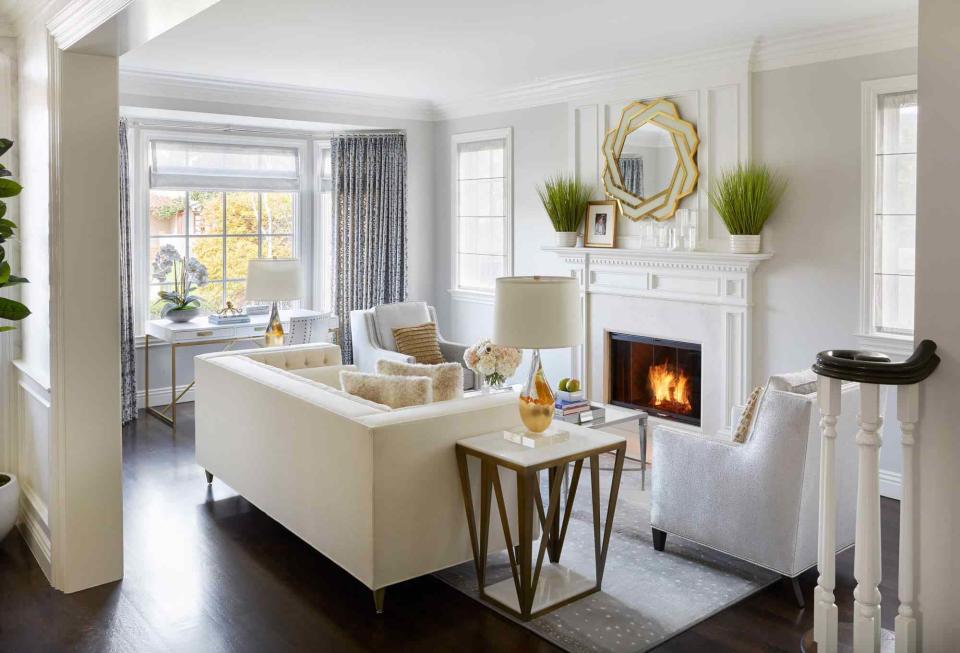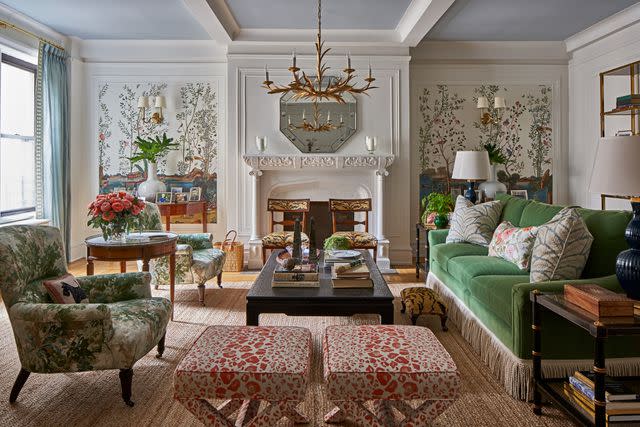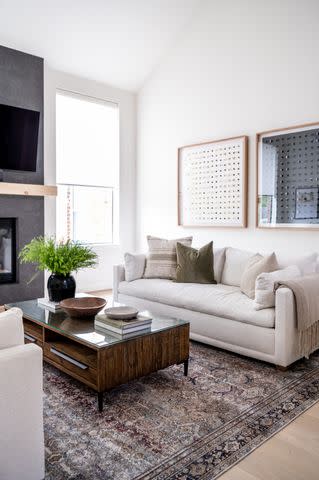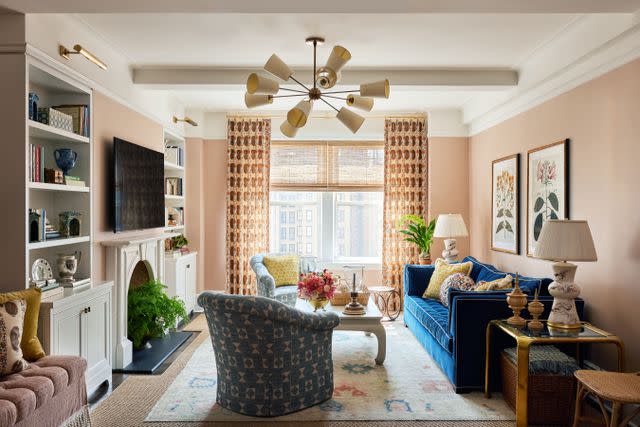11 Tips for Choosing Furniture for Small Spaces, According to Designers
A small space can still feel elevated with these design tips.

Whether you are decorating a charming but tiny studio apartment or you have a single-family home with a petite room that’s in need of creative solutions, the biggest obstacle to designing a small space starts with choosing the right furniture.
A sofa that is correctly scaled to a small area can make an entire room feel larger and more welcoming, while double-duty pieces let your room straddle the line between functional and styled. The color of these pieces can also create the illusion of more square footage.
Want to give your small space a new look that feels elevated? We're sharing tips from designers on how to choose the right furniture for small spaces.
Related: How to Arrange a Small Bedroom to Give the Illusion of More Space, According to Experts
Plan Out Your Furniture
When every square inch matters, it's essential to go in with a firm plan for furniture. "Spend the time upfront to come up with a spatial plan that makes sense," says Kristin Harrison, Founder of Bungalow 10 Interiors. "Put tape on the floor and see how the room feels with the dimensions of the pieces you like. It is so important to utilize every inch, but also fill it properly." This first step saves you from buying a sofa that’s too big, splurging on a rug that’s too small, or trying to figure out how to return one accent chair when you find out that two won’t fit.
Play With Scale
Not every piece needs to be compact in a small space. Having fun with sizing can keep a room that’s lacking in square footage more interesting. For example, having some bigger pieces with a few smaller items is less busy looking than a lot of small pieces, says Cathleen Gruver, Lead Interior Designer at Gruver Cooley. Aiming for variety in a smaller room is ideal.
Add Statement Pieces

Marco Ricca / Designer Amal Kapen
Don’t get so caught up in keeping the space free of excess that you forget to add a few statement pieces. Those are what make a small space sing—and what elevate it to a space that feels intentionally decorated. “If you are able to throw in a few special pieces—maybe an antique side table, or a beautiful lamp, or throw pillows—it can instantly give your space a more elevated feel. All it takes is one to two special items to give a space that feeling,” says Gruver. These can be thrifted items or hand-me-downs from a grandparent. If they speak to you, that’s what matters.
Don't Overdo It
While statement pieces and pattern can work to expand the feel of a space, you want to avoid an arrangement that is too visually busy or impedes flow. "You don’t want the room to feel congested or crowded,” says Danielle Perdue, founder of DK Home. Keep larger, visually heavier pieces like bookcases or sofas up against the wall to make the space feel open. Layer in a styled accent piece or two, but don’t overdo it. Keep the space as clear as possible, she says.
Use Double-Duty Items
Double-duty furnishings are key in a small space where you may not have room for both accent and storage pieces. “An ottoman or two small benches can work as both a coffee table or extra seating,” says Perdue. Think about pieces that have more than one use—two small storage ottomans can sit side-by-side as a coffee table or seating area while also using them to store blankets and other items.
Related: 10 Benches That Add Style and Function to Your Entryway, Bedroom, and Beyond
Match the Furniture to the Walls

Ellen Renee Photography | Nancy Lane Interiors
You don’t have to go neutral, but matching the furniture to the walls creates a monochromatic look that makes a small room feel more cohesive and spacious. “Painting a room all one color can make a small space feel larger, says Perdue. "Choosing a sofa in the same hue will allow it to blend rather than stand out." Think about a sumptuous navy sofa against a deep midnight wall or a white loveseat disappearing into an off-white backdrop. It feels almost like an endless space.
Related: Color Drenching Is the Latest Must-Try Paint Trend, According to Interior Designers
Go for a Small Sofa with Skinny Arms
Choose a loveseat or small sofa that has slender, skinnier arms so it feels more to scale, says Perdue. You won’t lose any of the functionality (perhaps, maybe, balancing a coffee cup on the arm), but the silhouette will feel more appropriate for a petite room and you won’t waste precious inches on a bulky frame.
Utilize Nooks and Corners
Look for furniture that can make the most of awkward nooks and corners. “Turn an alcove into a breakfast nook with a window seat and oval table," says Perdue. "Place a loveseat in between built-ins, creating a cozy reading nook." These pieces can make the most of the small, under-utilized corners that otherwise might go empty and unused. You can often find thrifted or antique pieces that were specifically designed for corners, including corner chairs, corner bookcases, and even corner china cabinets.
Related: How to Create and Style a Cozy Breakfast Nook Without a Major Renovation
Choose the Right Size Rug

Kirsten Francis | Kerri Pilchik Design
When you’re in a small space, it’s tempting to choose a small rug. Going big seems counterintuitive, but it's actually the opposite. “Make sure your rug extends underneath at least the front feet of all furniture,” says Murphy. This avoids a dollhouse look, where everything appears miniature rather than sized correctly for the space.
Related: How to Place a Living Room Rug for Every Size Space, According to Designers
Look for Furniture with Legs
In a small space, the goal is to create as much air and light as possible, and decorating with furniture that has legs is one way to bring levity into a room. "I like to choose furniture on legs in small spaces, as that helps visually extend the lines," says Murphy. For a visual, think about two upholstered chairs with skirts that extend down to the ground vs. two midcentury chairs with long wooden legs. The chairs with legs will have a lighter look that is less imposing in a tiny room.
Don’t Shy Away From Color
Furniture in small spaces doesn't have to be minimalistic. "Leaning in and going with colorful pieces in a shade that brings you joy can make the space come together,” says Murphy. Go for that deep emerald sofa or those vibrant coral swivel chairs. While light neutrals do help a room look brighter, going all in on your personal style makes even the smallest of spaces feel like your own jewel box.
Related: The Unexpected Red Theory Will Change the Way You Approach Interior Design
Read the original article on Martha Stewart.

